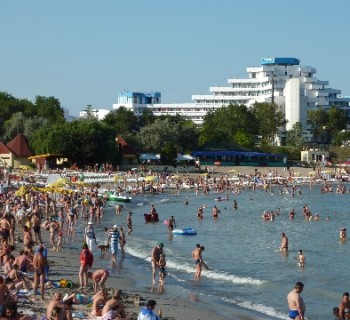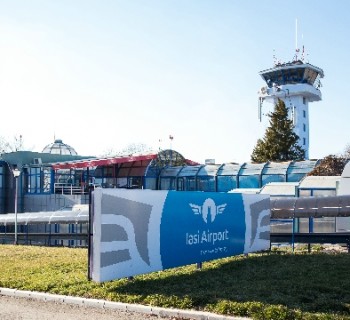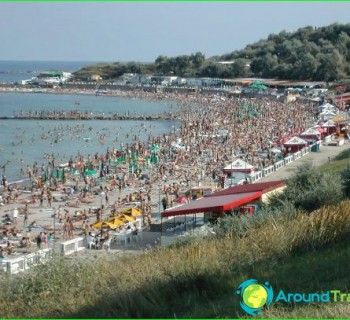Coat of arms of Romania

Who would have thought that one of the poorest countries that were part of the socialist bloc, after gaining independence, would choose royal elements for the main symbol. The coat of arms of Romania, as an independent state, really took as a basis the one that existed in 1922-1947. small coat of arms of the kingdom.
Proud, strong bird - a symbol of Romania
The main element of the state emblem is the eagle, a bird quite often used in heraldry. On the Romanian official symbol, this bird of prey is depicted in noble gold tones with paws and beak of no less noble, scarlet color. In its paws, the eagle holds a sword and a scepter, thus indicating the inviolability of the country's sovereignty and readiness to defend independence and freedom..
Coat of arms
A shield is placed on the eagle's chest, the field of which is divided into five parts, painted in the national colors of Romania, which are also present on its flag. Each of the parts symbolizes a particular historical region of Romania through certain stylized images:
- Wallachia is represented by a golden eagle in an azure field;
- Moldova - a silver bull's head on a scarlet background;
- for Oltenia and Banata, a stylized image of a lion on a bridge was chosen;
- Dorouja is shown through dolphins;
- Transylvania is the richest in signs and symbols (seven castles, a black eagle, heavenly bodies - the sun and the month).
The history of the Romanian coat of arms
The roots should be looked for in the distant 1859, when the two Romanian states of Wallachia and Moldavia were united. Since each of the states had its own symbol, after their unification, a new coat of arms appeared, on which there were images of the tour representing Moldova, and the golden eagle, the symbol of Wallachia.
Karol became the prince of Romania in 1866, it was during his reign that the shield began to be divided into four parts, in two of them an eagle appeared, in others - a bull. Then one of these symbols was replaced by dolphins, the so-called representatives of Dobrudja, and instead of another, a golden lion appeared, referring to Oltenia.
In 1922, Transylvania became part of Romania, the question arose about the presence of symbols of the new territory on the state emblem. The shield received a division into five parts, Banata was added to Oltenia (there is a bridge on the shield). In addition, at that time three versions of the coat of arms were known: small, medium, on which there were supporters and a motto, and a large, decorated with a mantle..
After the war, Romania, under pressure from the Soviet Union, abandoned the former beautiful and history-covered coat of arms. But after the revolutionary events of 1989, the new (old) coat of arms was approved at a meeting of the two chambers of parliament..


